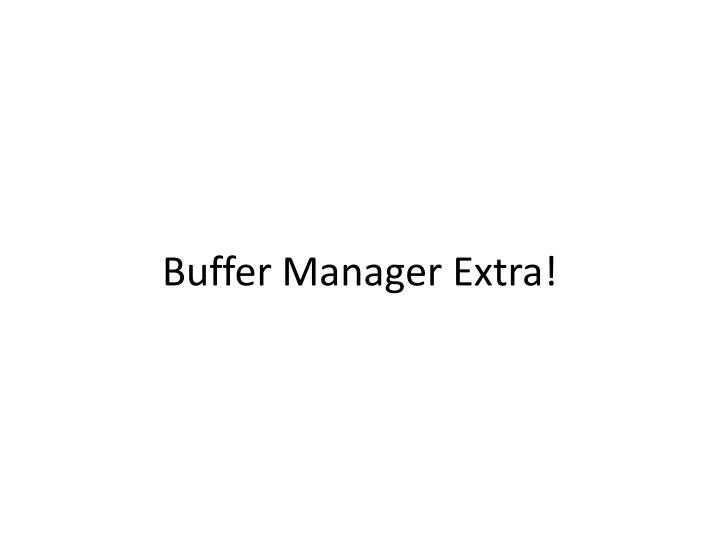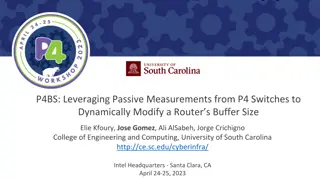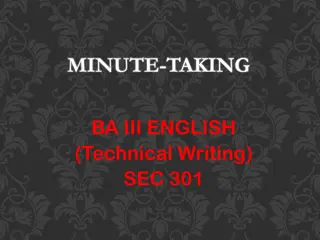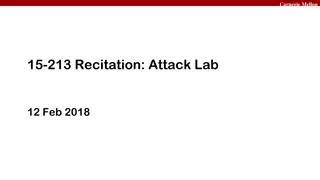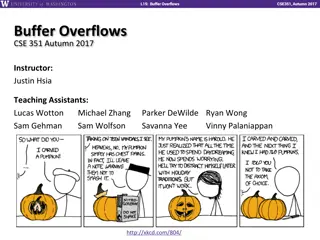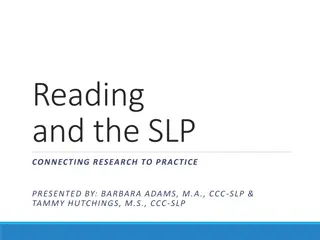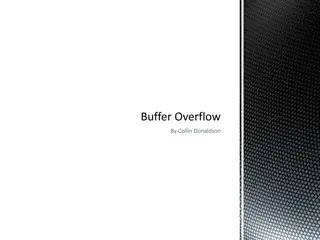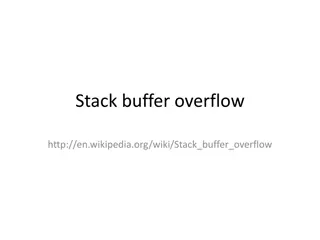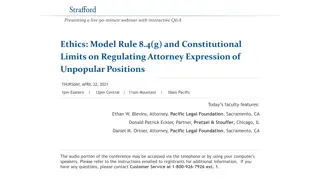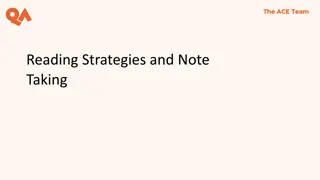Buffer Manager Extra - Further Reading and Famous 5 Minute Rule
This content delves into the Buffer Manager Extra concept and explores further reading materials, including discussions on the LRU-K Page Replacement Algorithm and the 5 Minute Rule. It provides insights into optimizing memory and disk access for efficient data management.
Download Presentation

Please find below an Image/Link to download the presentation.
The content on the website is provided AS IS for your information and personal use only. It may not be sold, licensed, or shared on other websites without obtaining consent from the author.If you encounter any issues during the download, it is possible that the publisher has removed the file from their server.
You are allowed to download the files provided on this website for personal or commercial use, subject to the condition that they are used lawfully. All files are the property of their respective owners.
The content on the website is provided AS IS for your information and personal use only. It may not be sold, licensed, or shared on other websites without obtaining consent from the author.
E N D
Presentation Transcript
Further Reading (Papers I like) Elizabeth J. O'Neil, Patrick E. O'Neil, Gerhard Weikum: The LRU-K Page Replacement Algorithm For Database Disk Buffering. SIGMOD Conference 1993: 297-306 Goetz Graefe: The five-minute rule 20 years later (and how flash memory changes the rules). Commun. ACM 52(7): 48-59 (2009) Jim Gray, Gianfranco R. Putzolu: The 5 Minute Rule for Trading Memory for Disk Accesses and The 10 Byte Rule for Trading Memory for CPU Time. SIGMOD Conference 1987: 395-398
The Five Minute Rule Cache randomly accessed disk pages that are re-used every 5 minutes. Wikipedia formulation Jim Gray Rule has been updated (and roughly held) a couple of times Calculation: Cost of some RAM to hold the page versus fractional cost of the disk.
Calculation for Five Minute Rule (old) Disc and controller 15 access/s: 15k Price per access/s is 1K$-2K$ MB of main memory costs 5k$, so kB costs 5$ If making a 1Kb record resident saves 1 access/s, then we pay 5$ but save about $2000. Break even point? 2000/5 ~ 400 seconds 5 minutes
5 Minute Rule abstractly RI: Expected interval in seconds between page refs M$ cost of main memory ($/byte) A$ cost of access per second ($/access/s) B size of the record/data to be stored A$ RI= M$*B
The Five Minute Rule Now If you re curious about it: Goetz Graefe: The five-minute rule 20 years later (and how flash memory changes the rules). Commun. ACM 52(7): 48-59 (2009)
10k ft view of LRU-k Main Idea: LRU drops pages w/o enough info. More Info (page accesses) better job Ideal: If for each page p, we could estimate the next time it was going to be accessed, then we could build a better buffer manager. LRU-k roughly keep around the last k times we accessed each page, and use this to estimate interarrival times.
Why might we want LRU-k No pool tuning required No separate pools required We can actually prove that it is optimal (in some sense) in many situations No Hints to the optimizer needed. Self-managing!
Notation for LRU-k Given a set of pages P=p1 pN A reference string r=r1 rT is a sequence where for each i=1 N ri = pj (j in 1 N). r4=p2 means the fourth page we accessed is page 2 rT=p1 means the last page we accessed is page 1 Let k >= 1. Then backward distance B(r,p,k) B(r,p,k) = x means that page p was accessed at time T-x and k-1 other times in r[T-x,T] If page p not accessed k times in r then B(r,p,k) =
LRU-k Ok, so we need a victim page, v. If exist page has B(r,p,k) = , pick p=v (ties using LRU) O.w., choose v = argmax_{p in P} B(r,p,k) LRU-1 is standard LRU
Challenge Early Page Eviction K >= 2. page p comes in and evicts a page. Next IO, which page is evicted? Keep a page for a short amount of time after 1st reference.
Challenge: Correlated References Correlated references: A single transaction access the same page ten times, each of these accesses is correlated with one another. If we apply LRU-k directly, what problem may we have? Compute interarrival guesses w/o correlated references. Pages that happen within a short window are not counted.
The need for History LRU-k must keep a history of accesses even for pages that are not in the buffer Why? Suppose we access a page, then are forced to toss it away and then immediately access it again. Upshot: May require a lot of memory.
Follow on work There was a 1999 paper that extended the conditions for optimality (LRU-3). Key idea is still that we can very accurately estimate interarrival time. Assume that the accesses in the string are independent. Optimal given the knowledge even LRU-1 is optimal given its knowledge! We skipped the experiments, but they show that LRU-2 does well (and so does LFU) See paper for details.
Record Formats: Fixed Length Record has 3 attributes: A, B, C always fixed size (e.g., integers) B C A B C A 4 20 24 Given start address START 1. B at START+ 4 2. C at START + 20 These offsets stored once in the Catalog
Record Formats: Variable Length (I) Record has three attributes: A, B, C C $ $ $ 3 B A $ $ $ 3 B C A Fields delimited by a special symbol (here $)
Record Formats: Variable Length (I) Record has three attributes: A, B, C C A B Graceful handling of NULL. How? Small array allows us to point to record locations What if we grow a field? It could bump into another record!
Record Format Summary Fixed length records excellent when Each field, in each record is fixed size Offsets stored in the catalog Variable-length records Variable length fields nullable fields some time too Second approach typically dominates.
Page Formats A page is a collection of slots for records A record id is identified using the pair: <Page ID, Slot Number> Just need some Unique ID but this is most common Fixed v. Variable Record influences page layout
Fixed, Packed Page Used Pages, then Free Pages Slot 1 Slot 2 Page Header contains # of records Free Space 4 Rid is (PageID, Slot# ). What happens if we delete a record? This approach does not allow RIDs to be external!
Fixed, Unpacked, Bitmap Free and Used comingle Slot 1 Slot 2 Page Header contains # of records & bitmap for each slot Free Space 7 0 1 0 1 1 0 1 Slot 7 Slot 1 Set the corresponding bit to 0! Rid is (PageID, Slot# ). What happens if we delete a record?
Page Formats: Variable Length Records Rid = (i,N) Page i Rid = (i,2) Rid = (i,1) N Pointer to start of free space 20 16 24 N . . . 2 1 # slots SLOT DIRECTORY * Can move records on page without changing rid; so, attractive for fixed-length records too.
Comparison of Formats Fixed-length is nice for static or append-only data Log files, purchase logs, etc. But requires fixed length Variable-length Of course, variable-length records Also, easier to use if we want to keep it sorted. Why?
Row-Column Consider 100 byte pages. 10 fields each and each 10 bytes. Row store: 1 record per page. Col store: 10 records per page. Pros? Higher throughput. Local-compression (why?) Cons? Update times. Ok, but what about main memory? (Cachelines and DCU)
